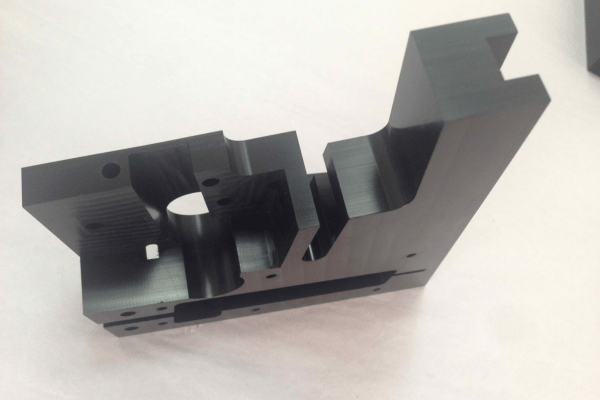The customer is from a mechanical equipment, he needs a batch of black POM material customised precision parts, after machining the parts can not be deformed, all the dimensions need to comply with the drawing tolerances. The following will be divided into 5 points to introduce the machining optimisation scheme:
Project Overview
What are the main challenges in manufacturing POM?
POM is a ubiquitous material for CNC machining. In the following case study, see how Kingsun Precision handles the task of machining precision parts made of POM. These parts require high dimensional accuracy and maintain shape stability after multiple passes. However, due to the nature of the POM material, it is prone to deformation during machining, making it a challenge to ensure the high quality of the product. emphasized text
Process optimisation programme (5 steps)
1. Material Selection and Testing
We started with a rigorous material selection process and chose a modified POM material to reduce the risk of deformation. Before formal processing, we conducted a small batch trial production to verify the material’s stability further. During the trial production, we found that the POM material showed good stability during processing, which laid the foundation for subsequent processing.
2. Optimization of clamping method
During the machining process, we adopted an improved clamping method. The traditional clamping method may cause uneven force on the POM parts during machining, leading to deformation. Therefore, we use special fixtures for clamping to ensure that the force on the workpiece is uniform during machining. In addition, a vacuum suction cup is used for fixation, further reducing deformation caused by clamping.
3. Reduction of cutting heat
POM material is very sensitive to cutting heat, and high temperatures can lead to material deformation. To prevent this problem, we use sharp cutting tools in machining to reduce cutting force and heat. At the same time, the use of coolant has been increased to ensure a rapid reduction in the temperature of the cutting zone and to avoid heat build-up affecting the material.
4. Multiple cutting cycles
In actual processing, we found that the POM material deformed slightly after each cutting. Therefore, we used multiple cutting cycles to remove the material gradually. After each cutting cycle, we inspected the part to ensure its size and shape met the requirements.
5. Annealing Treatment to Reduce Stress
To further improve the parts’ stability, we annealed the POM parts after rough machining was completed. By annealing in an oil bath and an air bath, we reduced residual stresses within the material and avoided possible deformation during subsequent machining or storage.

(Finished product display)
Customer Feedback
The customer received the parts we delivered and provided feedback on the parts, he was very pleased with the size and shape of all the finished products.
‘This is a fantastic masterpiece! I would like your company to help me on my next order’ Henry said.
If you have a new machining project that you would like us to help with, please feel free to contact us for a free quote.
The customer is from a mechanical equipment, he
Anodized color finishes provide a durable, visua
All our products are manufactured using material
Contact: Miss He
Phone: +86 755 36841667
Tel: +86 755 36841667
Email: sales@usbtop.com
Add: Yuanjian Industrial Park, the intersection of Yizhuo Road and Yixiu Street, Pingshan New District, Shenzhen, China